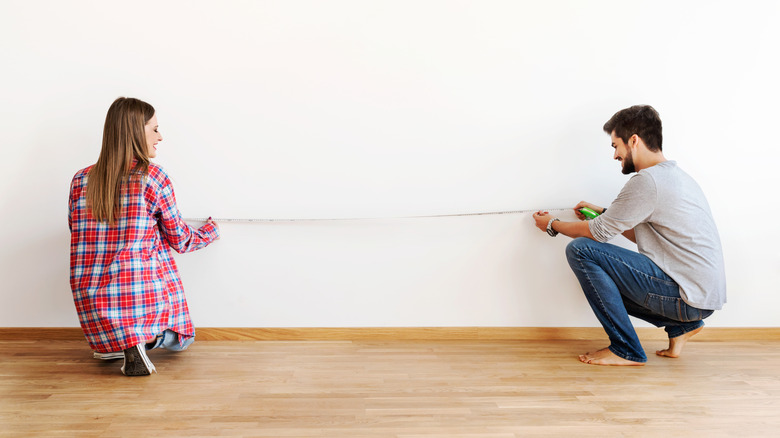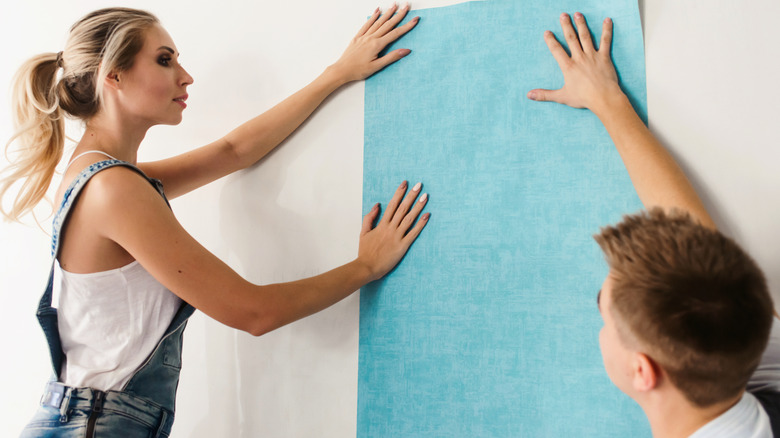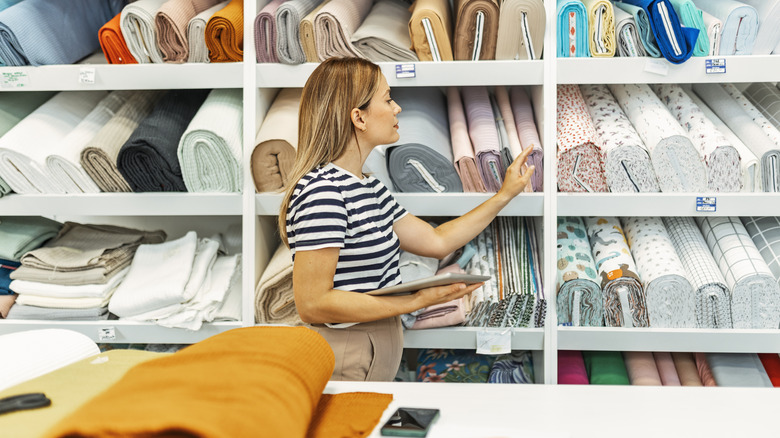The Unique Design Trend For Textured Accent Walls
Though maximalism and color drenching seem to be elbowing their way into today's living spaces, it's perfectly understandable that some homeowners may be hesitant about jumping into such intense interior design trends in their own homes. Enter the accent wall, a design feature that delivers a striking impact through one transformed surface. Some may see it as a half-baked attempt at impactful design, but a number of designers still remain on 'Team Accent Wall', provided that it's taken beyond a boring paint job and creatively explores different textures, colors, and materials. Among the many accent wall ideas to liven up your home, using fabric to create a textured accent wall is a design avenue worth exploring.
Textured accent walls make great statement pieces in any room and can ease any indecisive thoughts of a novice home decorator, being a less permanent alternative to wallpaper or paint. They can also be quite sustainable, putting any excess fabric or cloth you may have lying around to good use. Finally, textured accent walls can add an intriguing tactile quality to a room; just think of leaning against a luxurious wall of velvet or running your fingers across a beautifully embossed surface. A striking bolt of fabric and some adhesive are all you need to turn that wall from dull to dazzling.
How to create textured accent walls
Once you've selected an area that you want to highlight, measure out the correct length and width of fabric to cover it, leaving some excess on all sides to anticipate any measuring errors. Prep your walls by sanding and filling in any cracks, and make sure your fabric's patterns, if any, are cut to perfectly align with each other. Tack your fabric to the wall with nails or push pins (for a firmer hold, you can use a staple gun, but keep your staples to a minimum to allow further fabric adjustment.)
With your fabric in place, brush the wall with either wallpaper paste or liquid starch. This step requires your complete attention and a quick work pace. As the adhesive dries quickly, you'll want to smooth the fabric over it before it sets. Run a wallpaper smoothing tool over your fabric to properly flatten it against the surface and release any air bubbles trapped underneath, then proceed to trim the edges with a sharp utility knife. To maintain your fabric wall's cleanliness, regularly run a lint roller over it to get rid of any dust.
Tips for a obtaining a textured accent wall
Of course, there are many do's and don'ts involved in designing an accent wall, so before embarking on this project, it's worth heeding the advice of design experts first. HGTV's Brian Patrick Flynn suggests, via YouTube, putting up a fabric sample on your wall for a few days to make sure the pattern or color really matches your expectations. When it comes to choosing a textile, favor dense weaves and sturdy fabrics for a better hold on the wall. Other designers recommend limiting that accent wall to the bedroom, a ceiling, or any small nook or cranny that sparks architectural interest.
Not ready to commit to the task of covering an entire wall in textile? Try bringing fabric to your home's surfaces as wall decor. In line with the maximalist trend, designers are abuzz with excitement at the textural boost this tactic offers. Whether you're tacking up a quilt or hanging a fabric-covered canvas on your wall, you'll end up with a stylish and tactile decorative object that can become the focal point of a room. You could also consider using curtains as an alternative to creating a fabric accent wall.


